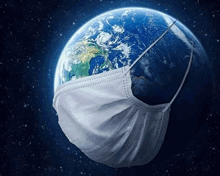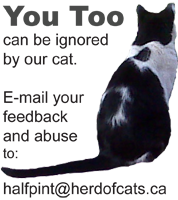You are hereProject Retirement, ep 14
Project Retirement, ep 14
The one where we take stock.
So, over a year ago, I gave myself just 2 years to learn how to sail, and be ready to spend the 2022-2023 winter season sailing a boat in the Caribbean. That was a tall order.
What have we done since the start of the series.
- We took a Sailing Basics class
- We went sailing on lake near home about 12 times
- We passed our VHF certification
- We took a Basic Navigation class
- I took a Intermediate Navigation class
- We took a Intermediate Crew class
- We took a Intermediate Sailing and Bareboat Chartering class
- We took a Catamaran Skipper class
- We went sailing for one week in St-Martin on a boat that tried to sink itself
- We bought a catamaran
- We delivered the catamaran from Quebec city to Ontario
- I managed repairs on the catamaran
So, it's been a busy year... Yet I think the most intense learning is still to be done this summer.
I also provided an extensive list of the things we needed to learn in order to succeed at this endeavour. Out of this list, we've been able to check off quite a few things:
- Skills of a sailor
- Points of wind LEARNT
- Right of way LEARNT
- Renting a bare-boat LEARNT
- Nautical terms SOME OF THEM
- Following the wind LEARNT
- Furl and unfurl sails LEARNT
- Reefing sails LEARNT
- Anchoring LEARNT
- Mooring LEARNT
- Knots MOST OF THEM
- VHF communications LEARNT AND CERTIFIED
- Right of way LEARNT
- Skills of a navigator
- Using charts LEARNT
- Using navigation instruments LEARNT
- Using navigation instruments LEARNT
- Skills of a mechanic
- Diesel engine maintenance LEARNT
- Skills of an electrician
- How to wire DC current LEARNT
- Soldering LEARNT
- Soldering LEARNT
- Skills of a plumber
- Fixing marine toilets TOILETS REMOVED!
- Skills of an amateur radio operator
- Frequencies LEARNT
- Analog modes LEARNT
- Digital modes LEARNT
- International communication laws LEARNT
- Analog modes LEARNT
That's a lot of things we've been able to stuff into our brains.
As I stated a few episodes ago, we bought a catamaran. It was "previously loved" as used-car salesmen say, and as soon as we brought it to Ontario, we pulled it out of the water and started repairs. A lot has been done before the snow covered it, but there is still a lot to do before we can put in the water this summer:
- Install power consumption meter at batteries (AKA shunt)
- Map all wires
- Fix water tank meter
- Fix fuel gauge
- Install USB charging plugs in all cabins
- Vent fridge compressor to the outside, not the salon
- Change cockpit LED string
- Fix RADAR system
- Run a few RJ-45 cat6 to top of mast
- Run PVC pipes up the mast
- Install LEDs in engine rooms
- Install Wifi access point and LTE booster
- Fix salon cushion velcro
- Test bilge alarms
- Repair and clean escape hatch
- Change all hatch bug screens
- Install proper bug screen in main door
- Properly secure davits
- Install AIS transmitter
- Test all speakers
- Change sink in galley
- Change faucet in galley
- Check drains in bathrooms/heads
- Test shower drain pumps.
- Install an engine battery cross-over
- Change hardtop/bimini
- Change cockpit table light
- Change fridge piston
- Put a piston on each engine access hatch
- Change starter switch on port engine panel
- Change LED nav lights
- Change LED mast flood lamp
- Change water strainer seal on Starboard side
- Install a washing machine
- Upgrade solar panels
- Change cutlass bearings
- Fix fissure on starboard rudder
- Fix delamination on both hulls
- Hatches do not stay open. Remove them and clean the mechanism.
- Purchase bug mesh cowls for some hatches
- Change/repair trampolines
- Change deck lockers knobs and locks
- Clean exterior of water tank
- Clean exterior of diesel tank
- Seal all cracks on the deck and cockpit.
- Clean chainplates
- Grease the shrouds
- Starboard winch needs servicing
- All stanchion bases are cracked, replace them.
- Starboard central cleat is loose. Re-seal it and tighten it.
- Figure out salon table. Make it into a bed. Find pistons to put under the table.
- Starboard bathroom floor is cracked.
- Engine strap on port side is loose. Tighten it.
- Replace part of port side engine cooling line between "tank" and seacock
- Some fuel lines at the tank are split, change them.
- Water in the fuel/water seperator
- Install dual fuel filters for each motor, and a flow switch
- Deprecated pump between water tank and fuel tank. Remove it.
- Get a mechanic to flush fuel system to remove deposits.
- Install a fuel polishing system
- Make sure all batteries are secured.
- The shore power entry point is not to code.
- The pressure gauge on the water maker is broken. The membranes are propably pooched too.
- Change and test the wind meter
- Change windlass remote control wiring.
- Replace flares
- Get new smoke and CO2 detectors
- Change fire extinguishers.
- Some portholes are oxidized. Remove, clean, and re-install them.
- Replace mast spreader ends.
- Cover battery poles
- Put seacocks bungs next to each seacock.
- Lubricate controls and engine control lines.
- Check engine mounts
Now, to be fair, this list is rather exhaustive and we will focus on the safety items this spring. A lot of the electronics and some of the external comfort items will only get refreshed in the summer of 2023. Which brings me to: when are we moving this beast to the tropics, as per my plan ?
Not as fast as I thought, it turns out.
We plan on sailing the down St-Laurence, and into lake Ontario and Great Lakes this summer. That means practicing maneuvering during the month of June near our home base near Montreal, then do a push to Kingston in July and spend most of the summer at the entrance of Lake Ontario. We would explore both the Canadian and US shores for the months of July, August, and September, and bring her back to our home base at the beginning of October.
Some refit would occur in the fall of 2022, and she would then be on the hard for the winter.
Summer of 2023 is when the Big Move would happen. We would once again sail her to lake Ontario for most of the summer, then head down the Oswego canal at the end of the summer, right down to Albany and then Manhattan. We would sail right down the eastern US coast during the fall of 2023, and spend winter 2023-2024 in the Florida Keys and set her up for hurricane season near Florida.
We would come back home to Canada for the summer of 2024, and prepare for the final stage: Winter 2024, the Grand Crossing. Well, to be honest, it would not be that Grand, but it would certainly mean we would be sailors at that point. The plan would be to cross from Florida to the Bahamas and cruise the Bahamas for the winter, and then rebase our boat in the Bahamas come hurricane season.
From there, it would be rinse and repeat. Until we get sick of it.
-

- Login to post comments
- 74 reads







